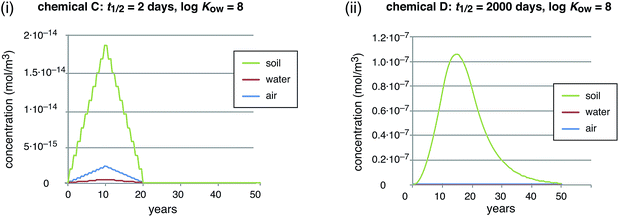 Open Access Article
Open Access ArticleCreative Commons Attribution 3.0 Unported Licence
Correction: Why is high persistence alone a major cause of concern?
Ian T.
Cousins
a,
Carla A.
Ng
b,
Zhanyun
Wang
c and
Martin
Scheringer
*d
aDepartment of Environmental Science and Analytical Chemistry (ACES), Stockholm University, SE-10691 Stockholm, Sweden
bDepartment of Civil & Environmental Engineering, University of Pittsburgh, 3700 O’Hara St, Pittsburgh, PA 15261, USA
cChair of Ecological Systems Design, Institute of Environmental Engineering, ETH Zürich, 8093 Zürich, Switzerland
dInstitute of Biogeochemistry and Pollutant Dynamics, ETH Zürich, Universitätstr. 16, 8092 Zürich, Switzerland. E-mail: scheringer@usys.ethz.ch
First published on 1st May 2019
Abstract
Correction for ‘Why is high persistence alone a major cause of concern?’ by Ian T. Cousins et al., Environ. Sci.: Processes Impacts, 2019, DOI: 10.1039/c8em00515j.
In the original article, some of the concentration values on the y-axis of Fig. 2(ii) were incorrect. The corrected Fig. 2 is shown below.
The Royal Society of Chemistry apologises for these errors and any consequent inconvenience to authors and readers.
| This journal is © The Royal Society of Chemistry 2019 |

